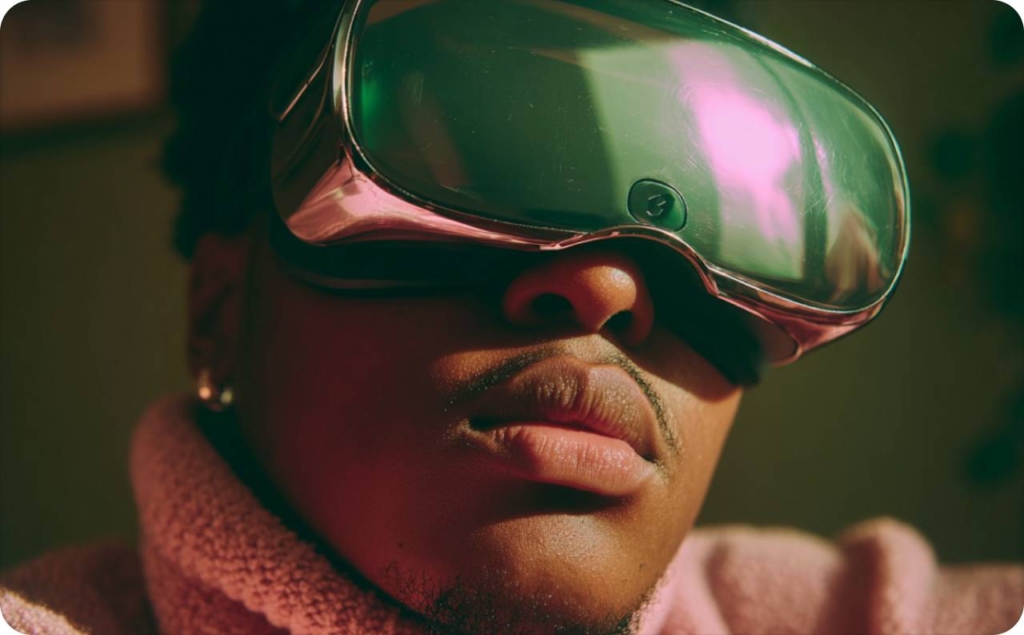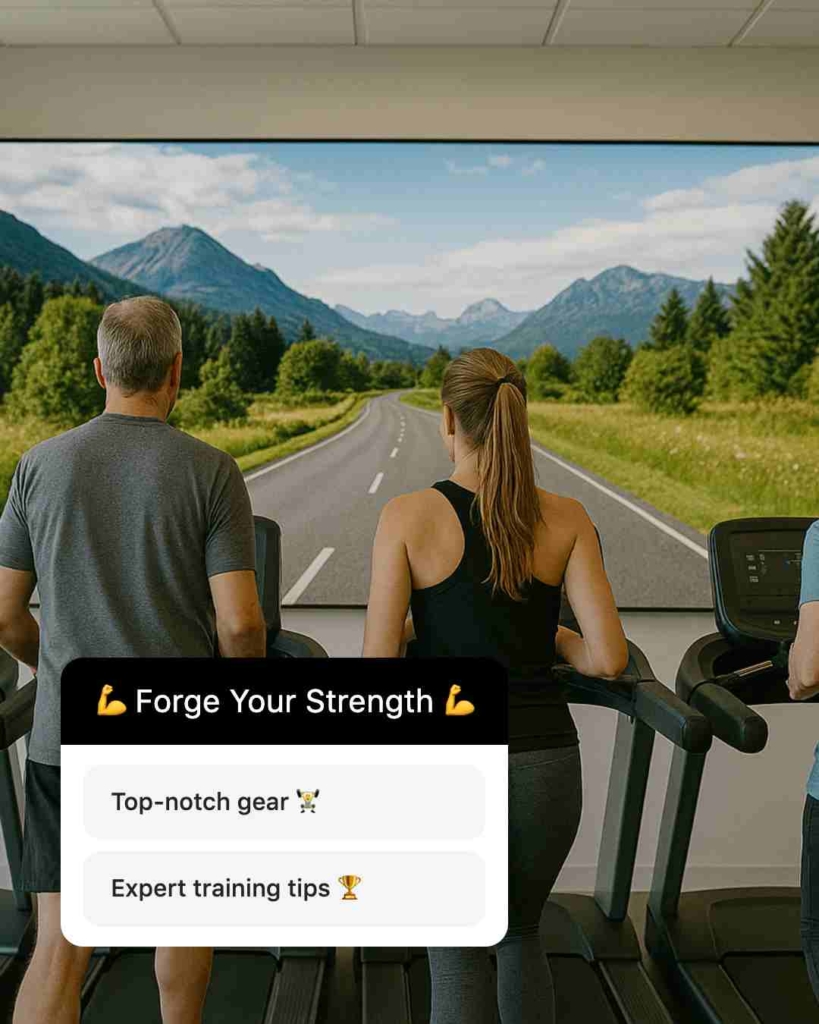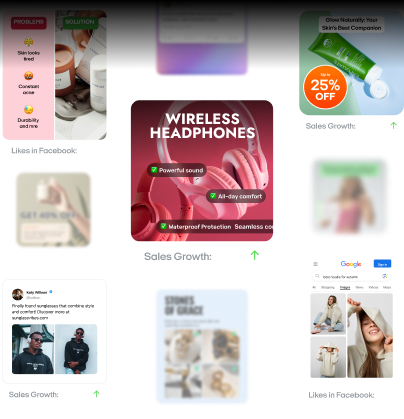Proven fitness digital marketing strategies for 2025
Curious how top fitness brands dominate the digital space in 2025? Zeely AI studied the best-performing campaigns to uncover proven fitness digital marketing strategies you can use today.
You’re running ads for fitness digital marketing. The impressions are there. But no one’s clicking. The budget’s spent, the creative looks great, but the results? Flat.
One of the most frustrating parts of fitness marketing is knowing something isn’t working… and not being sure why.
But there’s good news: the bar for effective fitness advertising has changed. You no longer need big-name athletes or studio-level production. What you need is a smart strategy. One that combines emotional storytelling, inclusive casting, and measurable outcomes that match your brand’s goals. A striking 92% of people expect brands to craft ads that feel like compelling stories, not just product pitches.
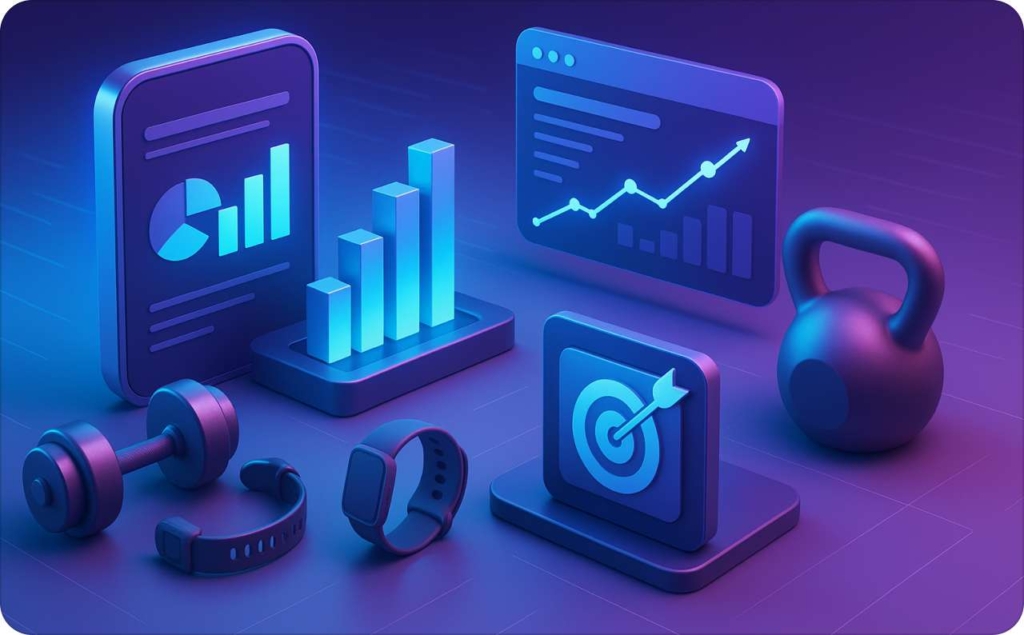
Visibility and belonging: The power of inclusive digital marketing
Inclusive fitness digital marketing is more than a trend in 2025 — it’s an expectation. When your fitness ads reflect different bodies, cultures, and life experiences, they do more than attract attention, they build trust. That trust turns into engagement, loyalty, and conversions.
56% of consumers stay loyal to brands that reflect their identity. In fitness, that means moving beyond aesthetics and showing real people in every size, age, and ability. Visibility creates emotional connection. Belonging drives action.
Let’s make that practical.
Feature stories from people who represent your actual audience. Use diverse casting: body-positive individuals, older adults, people with disabilities, different cultural backgrounds. Show varied motivations: recovery, confidence, energy, healing.
Now, think about your next campaign. Does it include:
- Voices from different communities?
- Messaging that avoids stereotypes?
- Representation that feels authentic, not forced?
Don’t just post a polished ad. Start a conversation with your community. Inclusive fitness campaigns that center social equity and cultural sensitivity don’t just perform better. They create stronger, more lasting brand relationships.
If your ad says “you belong here,” people listen. If it proves it, they stay.
What makes a fitness ad truly effective in 2025
Emotional resonance: Storytelling, empathy and identity
In 2025, the most effective fitness ads do more than show results. They tell real stories that move people. Emotional storytelling isn’t just creative fluff; it’s a proven strategy for building brand identity and deepening audience connection.
You can create this kind of impact without a big budget. Start by using a simple story arc:
- Introduce a real person your audience relates to
- Show the challenge they face
- Reveal how movement empowers their change
Try a basic script prompt like:
“Meet [Name], a [life stage] who returned to fitness after [challenge].”
This kind of honest, identity-led intro taps into empathy and trust from the first frame.
Authenticity is your competitive edge. Avoid scripted lines or over-edited visuals. Use real voices. Highlight diverse motivations: mental health, energy, healing, confidence, not just aesthetics. When a viewer says, “That feels like me,” you’ve built emotional resonance.
So, what’s the takeaway?
Start with a single, truthful story. Structure it with care. Deliver it with empathy.
That’s how fitness storytelling becomes a brand’s emotional engine.
Actionable vision — turning creative ideas into strategy
Turning a creative concept into a high-performing fitness ad starts with clarity. Your ad should serve a specific marketing objective like app installs, trial signups, or purchases and be built around measurable performance KPIs such as CTR, CPA, or ROAS. Without that alignment, even strong visuals fall flat.
Different platforms demand different strategies. A TikTok user expects fast, native storytelling. Meta rewards direct value in the first few seconds. YouTube leans on strong hooks and clarity up front. Instead of copying one design everywhere, tailor your creative to match the format and intent of each platform.
Build your strategy by working backward:
- What outcome do you want?
- What action should your audience take?
- What does success look like in metrics?
Once your goals are clear, map each creative idea to fit the unique flow of the platform you’re using. For Instagram Reels, keep the format tight around 15 seconds with a brand reveal by the 2-second mark to catch attention fast. On TikTok, lean into native audio and use on-screen text with a hook in the first 3 seconds.
This is to blend seamlessly with user-generated content. For YouTube, front-load your message with a five-second intro that’s impossible to skip, followed by a clear product benefit within 15 seconds to keep viewers engaged.
Effective fitness ads are no longer just about being clever. They succeed when strategy and creativity work together, backed by clear goals, relevant platforms, and ongoing optimization.
Fitness ads best practices: From strategy to execution
Choose the right platform for your audience
Every platform behaves differently and so does your audience on each. TikTok excels at short-form discovery, where fitness challenges and transformations feel native. Facebook & Instagram offers robust retargeting and local awareness tools, making it ideal for gyms and wellness studios. YouTube rewards depth, perfect for storytelling via longer tutorials or testimonials.
For example, Gymshark’s TikTok content saw a 32% increase in engagement after shifting to creator-led “challenge” formats. Meanwhile, Barry’s Bootcamp uses Meta to geo-target local fitness seekers and drive sign-ups via carousel CTAs.
Start by mapping your offer to platform behavior: TikTok for inspiration, Meta for conversion, YouTube for storytelling. Use platform-specific analytics like engagement rate per view or CPC to evaluate performance.
Align your CTA with campaign stage TOFU/MOFU/BOFU
A great fitness ad doesn’t just look good, it drives the right action. That starts with aligning your CTA to the user’s stage in the funnel.
- At top of funnel, you’re raising awareness. Use broad, low-commitment CTAs like “Watch the challenge” or “Discover more.”
- At middle of funnel, users are evaluating. Try “See real results” or “Compare plans.”
- At bottom of funnel, it’s decision time. Strong CTAs like “Book your free trial” or “Start your 7-day challenge” work best.
Real example: One fitness app A/B tested two MOFU CTAs — “See pricing” vs. “Try risk-free.” The second lifted conversions by 28% and reduced bounce by 19%.
Match your CTA to the emotional and informational state of your audience.
Implement user-generated content to build trust
In an industry built on transformation, UGC offers unmatched credibility. People trust real people, especially in fitness. That’s why brands like Orangetheory showcase real member stories, while Peloton amplifies user-generated hashtags like #MyPelotonJourney.
84% of people trust peer content more than branded ads. Even short video testimonials can outperform high-budget promos.
Invite your community to share before-and-after clips, reviews, or unfiltered workouts. Reshare with consent, tag users, and fuel engagement. The result? Stronger community, higher retention, and 2–3x more interaction per ad.
Optimize creative for the first 3 seconds
In a scroll-happy world, the first 3 seconds determine success. That’s your make-or-break moment.
Use dynamic motion, bold text, or surprise visuals right away. Try hooks like “I Lost 30lbs in 3 months without a gym” or a powerful audio cue. Meta data shows ads with motion in the first 3 seconds see 27% higher watch-through rates in fitness campaigns.
Start with action, not your brand mark.
Test visual narratives, not just formats
Too many brands swap formats without changing the story. That’s a miss.
Focus on the narrative: one story can show transformation, another builds community, and a third highlights mental benefits. Then measure what actually drives engagement and conversions. For example, a fitness brand tested two storylines: physical change vs. beginner journey. The latter drove 35% higher view duration and 21% more comments.
Track view depth, shares, and engagement metrics. Don’t just change format, change the story.
Fitness ad strategy blueprints
Below are five real campaigns, each decoded into what worked, why it worked, quick metric cues, and a mini framework you can copy.
Empowerment blueprint – Nike “Dream crazier”
Nike turned “too emotional” into a battle cry with its iconic Dream Crazier campaign. Narrated by Serena Williams, the ad stitched together real clips of female athletes breaking barriers and defying bias. The strategy hinged on a high-emotion voiceover, powerful stereotype reversals, and tight cinematic pacing, all anchored to a single empowering line that resonated globally.
The result? A 31% boost in video engagement and a noticeable spike in search traffic for “Nike women,” proving that emotional storytelling doesn’t just inspire, it performs.
Mini framework for you:
- Name the barrier your audience hears daily
- Show proof of people like them smashing it
- Land a rallying CTA that matches your KPI
Community-driven blueprint – Gymshark’s social UGC
Gymshark handed the mic to its community and let fans script the story. Through a steady stream of micro-creators, daily workout clips, and viral hashtag challenges, the brand built a content engine powered by real people.
The strategy paid off with a 39% increase in TikTok mentions and a 22% lift in engagement across branded tags, proving that peer-led narratives outperform top-down messaging in today’s fitness ad landscape.
Mini framework for you:
- Launch a simple challenge
- Repost top entries every week
- Reward creators to sustain volume.
Body positivity blueprint – Blink Fitness “Every body happy”
Blink Fitness broke away from the shredded-body stereotype and instead spotlighted real members showcasing a range of sizes, ages, and abilities, all moving with visible joy. The campaign embraced inclusive casting and paired it with confidence-forward messaging, blending bright out-of-home visuals with Meta video ads for a multi-channel lift.
This shift in representation wasn’t just feel-good branding. It delivered measurable impact, driving a 28% brand lift among underserved demographics and doubling the click-through rate compared to the industry average.
Mini framework for you:
- Audit visuals for gaps in size, age, race, ability
- Script joy-first lines
- Track saves, shares, and sentiment to prove resonance
Transformation blueprint – Reebok “Empower her”
Reebok shifted the spotlight from surface-level transformation to inner strength, celebrating discipline, mindset shifts, and personal milestones that women achieve on their fitness journeys. The campaign leaned into a three-act narrative arc and featured authentic brand ambassadors whose stories felt lived, not scripted.
With bottom-of-funnel CTAs tailored for action, the results were clear: 4× higher engagement on their Women’s line and a 19% boost in brand favorability.
Mini framework for you:
- Write a 3‑act script around a real customer
- Film diary-style clips and voiceovers for credibility
- Close with a direct action like “Start your 7‑day challenge” tied to ROAS
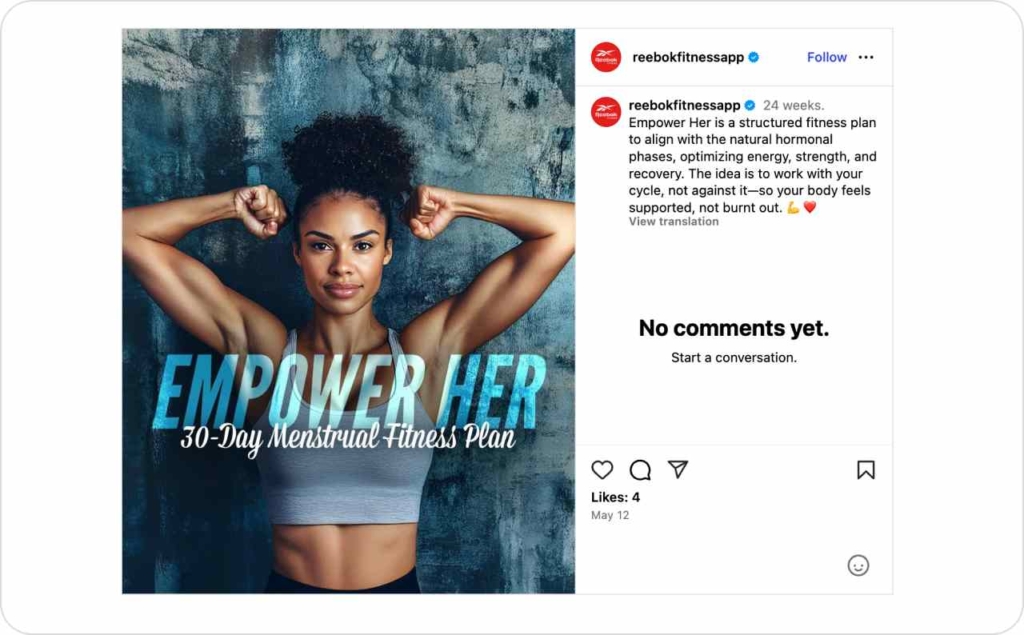
Photo source: @reebokfitnessapp on Instagram
Humor and creativity blueprint – Gold’s gym “Angry tight buttons”
Gold’s Gym took a bold turn with humor, using absurd animation of shirt buttons violently popping off to personify the frustration of procrastination. The visual metaphor landed instantly funny, fast, and easy to remember. It worked brilliantly as a pre-roll or retargeting spot, delivering a sharp punchline in under five seconds.
The payoff? A 44% lift in ad recall and triple the social shares compared to their previous campaigns.
Mini framework for you:
- Pick a pain and exaggerate it visually
- Deliver the gag in <5 seconds, then pivot to offer
- Retarget laughers with a serious BOFU discount or trial.
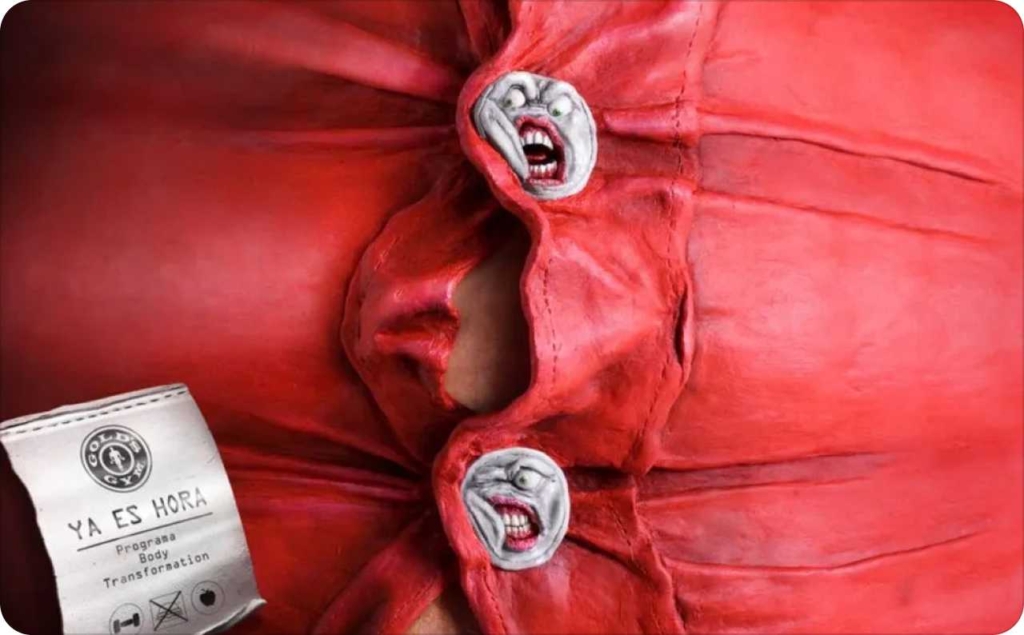
Photo source: Gold’s gym “Angry tight buttons” campaign
Create fitness ads that convert with AI
Fitness studios, gyms, and personal trainers thrive on momentum — and your ads should, too. Zeely AI ad generator helps you create bold, high-impact static and video ads in minutes, designed to drive signups, fill classes, and grow your brand across platforms.
Whether you’re launching a bootcamp, promoting seasonal memberships, or advertising virtual training sessions, Zeely gives you pro-level content without the need for a creative team or expensive tools.
What makes it a game-changer for fitness marketing
- Fast, no-sweat ad creation. Generate static visuals in seconds and video ads in under 7 minutes — ready to publish when you are
- More leads, more memberships. Zeely’s AI-built ads are optimized for engagement and signups — perfect for challenges, offers, and limited-time promos
- No production crew needed. Forget the studio rental. With lifelike avatars and plug-and-play templates, your next fitness ad is just a few clicks away
- Reach your audience everywhere. Launch ads built for Instagram, TikTok, YouTube, Facebook, and Google — all tailored to where fitness content performs best
- Test and grow faster. Run up to 20 ad versions at once for the same offer — test messaging, visuals, and hooks without extra effort
Features tailored for fitness brands
- 100+ ready-ready templates. Prebuilt for personal training, group classes, yoga, HIIT, Pilates, and more — updated regularly for max impact
- AI-written copy that energizes. Generate compelling headlines, offers, and calls-to-action using proven fitness marketing frameworks like AIDA and PAS
- 500+ AI avatars with energy. Use realistic video presenters to demonstrate offers, deliver CTAs, or promote your brand — no camera needed
- Visual editing made simple. Crop workout images, remove backgrounds, and tweak color schemes to match your studio’s style
- Integrated ad publishing. Connect Zeely to your Meta account and launch Facebook and Instagram ads instantly, no switching tabs
- Script generator for fitness storytelling. Promote classes or programs with narrative-driven video scripts that move people to act — great for reels and shorts.
Pricing that fits your business
Zeely offers flexible pricing for fitness pros, from solo coaches to franchise gyms. Every plan includes ad builders, templates, AI avatars, and publishing tools — all at a fraction of traditional content costs. Starts at $29.95/month, with more assets unlocked in higher tiers.
Why fitness brands choose Zeely AI
Zeely is built for service-driven industries like fitness — where speed, clarity, and visual storytelling make all the difference. Instead of wasting time on editing or hiring outside help, you can launch powerful campaigns on your own — and start seeing results fast.
Whether you’re building your client list or scaling a fitness empire, Zeely keeps your marketing lean, professional, and always moving forward.
How to plan your own fitness ad campaign step-by-step
You need a structured roadmap from goal-setting to casting to analysis to create messaging that resonates and performs.
Step1. Define clear, inclusive campaign goals
The first step in planning a high-performing fitness ad campaign is to set goals that are specific, measurable, and inclusive. A vague objective like “grow brand awareness” doesn’t drive performance. Instead, use SMART goals: specific, measurable, achievable, relevant, and time-bound to define exactly what success looks like.
For example, don’t just say “increase signups.” Say: “Drive a 20% increase in app signups from first-time gym-goers within 60 days.” This type of goal aligns with both KPI tracking and creative direction.
To build inclusive goals, start by segmenting your audience. Define who you want to reach by demographics, fitness level, goals, and lifestyle.
Step 2. Choose the right ad format: Video, static, UGC, or hybrid
The best ad format for a fitness campaign depends on your goals and platform. Some formats grab attention fast. Others build trust over time. Choosing the right one directly affects your performance.
Video ads work best when you want energy and emotion. A 15-second Instagram Reel of someone crushing their first pull-up? That connects instantly. Meta reports video drives 30% more engagement than static ads. For awareness or top-of-funnel reach, start here.
Static ads are great for direct offers: flash sales, new class launches, or retargeting. One image. One message. One CTA. They’re fast, budget-friendly, and ideal for Meta placements or display networks.
User-generated content thrives in gym campaigns. Use it to show real people, member wins, or day-in-the-life shots. These feel honest and relatable. One fitness brand swapped polished visuals for UGC and saw a 22% lift in conversions.
Hybrid formats mix raw and branded content. Start with an iPhone intro, then add your polished message. This blend supports strong visual storytelling and performs well mid-funnel.
In any fitness ad campaign, your format isn’t just a creative choice, it’s a performance lever.
Step 3. Script and visualize a relatable story arc
Start with the hook. This moment grabs attention. It might show a gym newbie feeling unsure. Or someone skipping their morning run. Keep it short, just enough to trigger a “that’s me” moment.
Next, create the shift. Show small wins. A first sweat. A coach’s encouragement. A personal milestone. These aren’t dramatic scenes, they’re relatable. Think eye contact, real pacing, messy ponytails, and high-fives. Keep the camera close and human.
End with the reward. Show how your product or program supports their transformation. Not perfection — progress. A confident smile. A new personal record. A return to routine. Make it about them, not you.
This arc hook → shift → reward works across formats. In a 30-second video, aim for:
- 0–5s: The problem or challenge
- 6–20s: The emotional shift
- 21–30s: The payoff and CTA
Example:
A woman hesitates outside a fitness studio (hook). A quick cut shows her trying her first class, breathing hard, then smiling during cooldown (shift). She walks home, earbuds in, looking proud. Text reads: “You showed up. Let’s keep going.” (reward)
That’s what moves people. Not actors. Not big claims. Just real stories, real stakes, and a clear path your audience wants to follow.
Step 4. Cast real people, not just idealized models
Your audience connects with real people, not fitness influencers with perfect bodies. Casting authentic individuals builds trust, drives engagement, and improves conversions across platforms.
The shift toward authenticity in fitness advertising isn’t a trend, it’s performance-backed strategy. According to Meta’s research, ads featuring diverse, real people saw a 23% boost in purchase intent. Why? Because people want to see someone who looks like them achieving real results.
Feature your actual gym members, trainers, or app users. Show natural movement. Use unscripted voiceovers. Highlight different ages, body types, and backgrounds. These stories don’t just make your brand feel human, they prove your product works in the real world.
Example: An independent gym in Austin replaced stock models with real members for its New Year’s campaign. The ads showed three members training, laughing, and talking about their goals. Result? A 38% lift in sign-ups compared to the previous version using fitness models.
That’s what moves people: real stories, real visuals, real lives.
Skip the filters. Show up real and your audience will respond.
Step 5. Launch, analyze, iterate – measure what moves people
To launch your fitness ad campaign, start lean and monitor results early. Don’t overproduce, focus on one strong concept per audience segment. Go live with 1–2 ad sets per platform. Give each ad a clear CTA and keep the message tight.
Track performance from day one using platforms like Meta Ads Manager, Google Ads, or TikTok Ads Manager. Watch key metrics like CPA, CTR, video watch time, and ROAS. These early signals tell you which message, audience pair is working and where creative fatigue might set in.
Once data comes in, run microtests to boost outcomes. Adjust headlines, swap thumbnails, and A/B test CTA variations like “Try for free” vs. “Start now.” For example, one gym brand saw a 21% drop in CPA and 29% higher ROAS when switching to a shorter hook and a stronger CTA in their Reels ads. That tweak cost nothing just better storytelling.
Launching gives you traction. Scaling comes from fast feedback loops and smart iteration. Read the data, refine the creative, and relaunch faster than your competition.
Final takeaways: Make ads that move, motivate, and matter
Fitness ads that perform aren’t built on hype, they’re built on strategy, emotion, and real connection. When you combine inclusive casting, story-led formats, and clear KPIs, you turn browsers into buyers and workouts into loyalty. Here’s how to apply everything you’ve learned:
- Set one SMART, inclusive campaign goal. Tie it to revenue, retention, or user engagement. This keeps creative aligned and measurable.
- Pick the right format mix. Use video to tell brand stories. Use UGC to build trust. Lean on static for direct offers. Use hybrids to move users through the funnel.
- Write a real story arc. Start with an emotional hook in the first 3 seconds. Anchor your message in benefits, not features.
- Cast real people. Representation boosts engagement. Use diverse ages, sizes, and abilities. Authenticity outperforms polish.
- Launch with a blueprint, not a guess. Track scroll-stop rate, view duration, CPL, and ROAS. Kill what stalls. Scale what works.
- Use tested CTA formulas. Simple, direct prompts beat vague ones. Match them to the viewer’s stage in the journey.
Ready to turn strategy into results? Now make it move.
Read more marketing ideas and strategies












Also recommended


